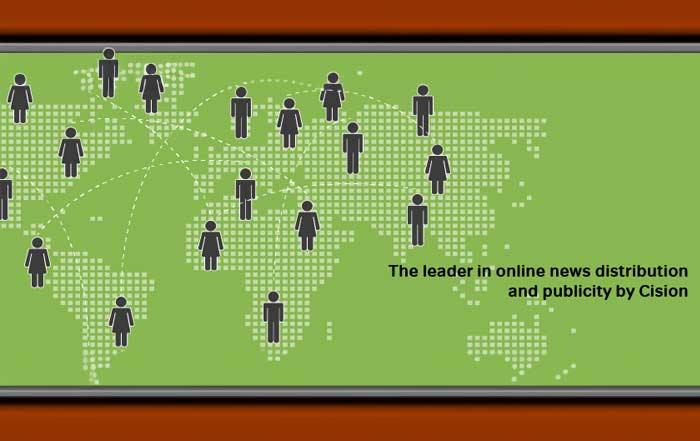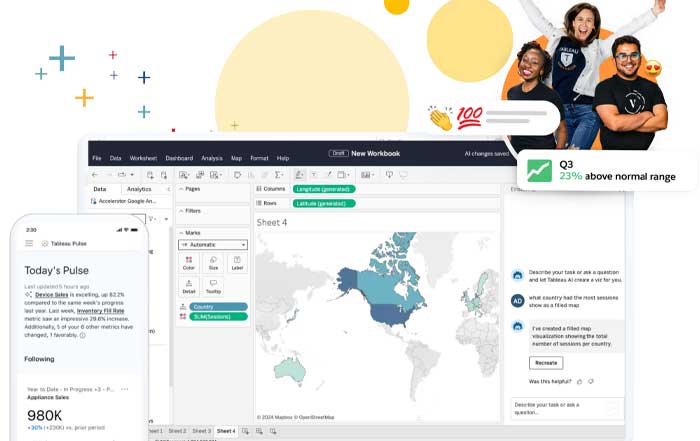The global financial landscape is experiencing a profound transformation as new crypto companies rapidly emerge and reshape the boundaries of fintech. No longer confined to the fringes of digital innovation, cryptocurrency and blockchain ventures have moved into the mainstream, becoming essential players in how money, data, and financial products flow across economies. Their rise is not simply a technological disruption but also a cultural and institutional shift that challenges how individuals, businesses, and governments perceive value and trust. For financetechx.com, an exploration of these new crypto-driven players offers an important perspective on how fintech is evolving into a more decentralized, digital-first, and innovation-driven ecosystem.
The appeal of these companies lies in their ability to leverage blockchain technology, smart contracts, decentralized finance (DeFi), and tokenization to provide faster, cheaper, and more transparent financial services compared to traditional banking and payment systems. As the world moves toward greater financial inclusion, especially in emerging economies, crypto companies are offering new avenues for investment, lending, and secure transactions. At the same time, they raise questions of regulatory compliance, security, and sustainability, making them a central focus for policymakers, investors, and industry leaders worldwide.
The Global Momentum of Crypto Startups
In regions such as the United States, Europe, and Asia, new crypto startups have scaled rapidly due to increased venture capital investment, improved blockchain infrastructure, and growing consumer demand for alternative financial solutions. According to data published by CoinDesk, global crypto venture funding has rebounded strongly in 2024 after a downturn in previous years, signaling renewed confidence in the sector. Investors are now more focused on utility-driven projects rather than speculative trading, creating opportunities for startups in payments, decentralized identity verification, and tokenized real estate.
Countries like Singapore, Switzerland, and the United Kingdom have positioned themselves as global crypto hubs due to progressive regulatory frameworks, while the United States remains a leading player in blockchain innovation, despite ongoing debates about federal oversight. In Africa and South America, crypto startups are addressing real-world challenges such as inflation, lack of banking infrastructure, and remittance inefficiencies. This global spread ensures that fintech is no longer centered only in traditional financial powerhouses but increasingly shaped by diverse regional dynamics.
For readers of FinanceTechX’s world coverage, this expansion represents both opportunity and risk: opportunity in new markets and business models, and risk in the form of volatility, regulation, and technology adoption hurdles.
The Changing Nature of Payments and Transactions
Payments remain at the forefront of fintech innovation, and crypto companies are leading this transformation by providing faster, borderless, and cheaper options compared to legacy banking systems. Firms such as Circle, the company behind USDC, and Ripple, with its cross-border payment technology, have already set the stage for mainstream adoption of digital currencies in global commerce. In 2025, newer companies are entering the market with even more specialized solutions, ranging from instant settlement for gig economy workers to blockchain-based payment gateways for small businesses.
As e-commerce expands globally, particularly in markets like India and Brazil, crypto-enabled payment solutions are solving the problem of high transaction fees and currency conversion costs. According to the World Economic Forum, digital payments powered by blockchain are also advancing financial inclusion by giving the unbanked population direct access to online markets without intermediaries.
For businesses tracking fintech developments through FinanceTechX’s fintech insights, the implication is clear: payment innovation is no longer optional but critical for competitiveness.
Tokenization and New Asset Classes
One of the most exciting contributions of new crypto companies to fintech is the rise of tokenization, which allows real-world assets such as real estate, commodities, or even art to be divided into digital tokens that can be traded on blockchain platforms. This process has opened investment opportunities to a wider range of individuals by lowering the barriers to entry and increasing liquidity in traditionally illiquid markets.
Companies such as RealT in the United States and Brickken in Spain are pioneering tokenized real estate, enabling fractional ownership of properties that were once accessible only to institutional investors. Meanwhile, digital securities exchanges in Europe and Asia are creating regulated markets for these tokenized assets, giving them credibility and long-term growth potential.
Tokenization is not limited to physical assets. Intellectual property rights, carbon credits, and even future revenue streams are being tokenized, reshaping how businesses think about financing and asset management. For professionals following FinanceTechX’s economy coverage, this trend demonstrates the merging of traditional finance structures with cutting-edge crypto innovation, creating a hybrid system of value transfer.
Decentralized Finance (DeFi) and Its Business Implications
Decentralized finance remains one of the most influential movements within crypto. Unlike traditional banking, which relies on centralized institutions, DeFi platforms use blockchain and smart contracts to allow individuals to lend, borrow, and trade directly with one another. Companies such as Aave, Compound, and Uniswap have already become household names in the sector, and new entrants are now building on these foundations to provide tailored solutions for enterprises and institutional investors.
DeFi companies are increasingly focusing on risk management, governance, and interoperability to gain trust from mainstream users and regulators. For businesses, DeFi represents both a challenge and an opportunity: a challenge because it competes directly with banks and traditional asset managers, and an opportunity because it opens doors to innovative financing models and global liquidity pools.
Industry analysts at Financial Stability Board highlight the importance of regulatory frameworks in ensuring that DeFi platforms can grow responsibly without exposing economies to systemic risks. For readers of FinanceTechX’s banking insights, DeFi’s trajectory is critical in determining how the relationship between fintech and traditional financial institutions evolves.
Global Crypto Evolution Timeline
Explore key milestones in cryptocurrency and fintech development
DeFi Explosion Begins
Platforms like Uniswap and Compound establish foundation for decentralized finance, enabling peer-to-peer lending and trading without traditional intermediaries.
Coinbase IPO & Institutional Adoption
Coinbase becomes first major crypto exchange to go public, while institutions like Tesla and MicroStrategy add Bitcoin to their balance sheets.
Regulatory Framework Development
European Union develops Markets in Crypto-Assets (MiCA) regulation, providing clarity for crypto companies across 27 member states.
Singapore Emerges as Crypto Hub
Singapore's progressive regulatory approach attracts major crypto companies, establishing it as Asia's leading blockchain innovation center.
Tokenization Revolution
Real estate, art, and commodities begin widespread tokenization, with companies like RealT and Brickken leading fractional ownership models.
Financial Inclusion Breakthrough
Companies like Yellow Card enable millions without bank accounts to access financial services through mobile crypto wallets across African nations.
Stablecoin Adoption Surge
Companies like Buenbit and Ripio help citizens in Argentina and Brazil use stablecoins as protection against hyperinflation and currency devaluation.
AI-Crypto Integration
Companies like Fetch.ai and SingularityNET merge AI with blockchain, creating intelligent decentralized systems for fraud detection and market analysis.
Green Fintech Leadership
MiCA regulation in full effect attracts startups to Berlin and Paris, with companies developing blockchain solutions for carbon credit trading and ESG compliance.
Enterprise Blockchain Integration
Companies like Fireblocks and Figure Technologies help Fortune 500 companies integrate crypto into treasury management and lending operations.
Regulation and Compliance: The Central Challenge
The rapid ascent of new crypto companies has inevitably placed them under the spotlight of regulators worldwide. Governments and financial authorities have recognized both the potential benefits and risks associated with digital currencies, leading to a wave of new laws and compliance frameworks in 2025. For startups, compliance is no longer an afterthought but a prerequisite for survival.
In the United States, the Securities and Exchange Commission (SEC) has increased its scrutiny of crypto tokens, particularly those that resemble securities. At the same time, federal agencies have pushed for clearer definitions of stablecoins and digital asset custody, creating both opportunities and roadblocks for innovators. In Europe, the Markets in Crypto-Assets Regulation (MiCA) has come into full effect, establishing uniform rules for issuers, wallet providers, and exchanges across the European Union. This regulatory clarity has attracted a new wave of crypto entrepreneurs to cities such as Berlin and Paris, solidifying Europe as a leader in transparent digital asset governance.
Asian markets are equally dynamic. Singapore’s Monetary Authority of Singapore (MAS) continues to position the city-state as a hub for regulated crypto innovation, offering licensing pathways for startups while ensuring strong consumer protections. In contrast, China remains restrictive on cryptocurrency trading but actively promotes the use of central bank digital currency (CBDC), pushing innovation into state-backed digital yuan applications. For FinanceTechX’s security insights, the balance between innovation and compliance highlights the importance of risk management and strategic foresight for companies entering regulated markets.
AI in Crypto Fintech
Artificial intelligence is playing an increasingly vital role in the evolution of crypto companies. By integrating AI into blockchain systems, startups are creating smarter, safer, and more efficient financial products. For example, AI-driven fraud detection tools are helping exchanges and wallets monitor suspicious activities in real time, reducing the risks of hacks and scams that have historically plagued the industry.
Startups are also leveraging AI for market analytics, predictive trading algorithms, and customer service automation. This convergence of AI and crypto is particularly significant for institutional adoption, as banks and investment firms seek greater transparency and efficiency when interacting with digital assets. Companies like Fetch.ai and SingularityNET are pioneering decentralized AI marketplaces, merging two of the most disruptive technologies of the 21st century.
For professionals following FinanceTechX’s AI coverage, this integration signals that the future of fintech will not be driven by a single technology but by the fusion of multiple innovations. The ability to combine AI’s predictive power with blockchain’s transparency has the potential to redefine financial security, lending, and asset management on a global scale.
Regional Perspectives on Crypto Disruption
While global trends demonstrate a common momentum, the disruption caused by crypto companies varies across regions, influenced by local culture, regulatory frameworks, and economic needs.
In North America, crypto firms are building institutional-grade infrastructure. Companies like Coinbase and Anchorage Digital are expanding services to large asset managers and corporations, ensuring digital assets are seamlessly integrated into traditional portfolios. The region is also home to a growing number of decentralized autonomous organizations (DAOs), which are experimenting with new governance models for financial decision-making.
In Europe, tokenization and green fintech are emerging as dominant themes. Startups in countries like Sweden and Denmark are developing blockchain solutions to track and trade carbon credits, aligning with broader European Union goals for sustainability. This intersection of crypto and environmental finance is gaining attention among global corporations seeking to demonstrate ESG compliance. For readers interested in FinanceTechX’s green fintech coverage, these companies represent a convergence of finance, technology, and environmental responsibility.
In Asia, innovation is accelerated by population size and digital infrastructure. South Korea and Japan are leading the adoption of crypto in gaming and metaverse ecosystems, where tokenized assets are embedded directly into entertainment platforms. Thailand and Malaysia are becoming centers for blockchain-based remittances, reflecting the economic importance of cross-border worker payments.
In Africa, the rise of crypto startups is deeply connected to financial inclusion. Companies like Yellow Card are enabling millions of people without bank accounts to transact and save through mobile crypto wallets. This transformation has significant implications for poverty reduction and economic empowerment, showcasing how crypto companies can have both commercial and social impact.
Long-Term Implications for Businesses and Economies
The growth of crypto companies is reshaping not only fintech but also the broader business and economic environment. Traditional banks and financial institutions are being forced to adapt or risk obsolescence. Many are now partnering with or acquiring crypto startups to maintain relevance in an increasingly digital-first marketplace. For instance, Visa and Mastercard have expanded partnerships with blockchain networks to integrate stablecoin transactions into global payment systems.
On a macroeconomic level, the mainstreaming of crypto is influencing monetary policy and international trade. With the proliferation of stablecoins and CBDCs, central banks face new challenges in managing liquidity and exchange rates. The International Monetary Fund (IMF) has issued guidance on how nations should integrate digital currencies into their economies without undermining financial stability.
For businesses, the implications are equally profound. From treasury management to payroll and supply chain financing, crypto-based solutions are reducing costs, increasing transparency, and expanding access to capital. Companies that embrace these innovations early stand to gain significant competitive advantage. Readers of FinanceTechX’s business insights and stock exchange coverage will find that crypto disruption is no longer speculative; it is an operational reality that boards and executives must strategically address.
Risks and Challenges of Crypto Innovation
While opportunities abound, the risks associated with new crypto companies cannot be ignored. Security breaches, volatility, and regulatory crackdowns remain persistent threats. Cybercrime targeting digital wallets and exchanges continues to evolve, requiring companies to invest heavily in cybersecurity infrastructure. Compliance costs are also rising, with many startups struggling to meet the demands of international regulators while maintaining profitability.
Market volatility, particularly in smaller altcoins, poses risks not only for retail investors but also for businesses experimenting with crypto-based treasury management. The collapse of over-leveraged platforms in previous years has made investors more cautious, placing emphasis on due diligence and risk diversification. Additionally, environmental concerns around energy-intensive blockchain networks remain relevant, despite the industry’s shift toward proof-of-stake and green mining practices.
For readers of FinanceTechX’s environment coverage, the sustainability question will continue to be a deciding factor in whether crypto companies gain acceptance from governments and socially responsible investors.
Emerging Leaders in the New Crypto Landscape
The wave of crypto innovation in 2025 is being driven not only by technology but also by the emergence of bold startups and visionary leaders who are redefining what it means to operate in the fintech space. Unlike the early years when the industry was dominated by speculative projects, today’s leaders are emphasizing utility, compliance, and real-world applications that extend beyond simple currency exchange.
Companies such as Fireblocks, a digital asset custody and security provider, have gained traction by helping institutions safeguard billions in crypto assets, bridging the trust gap between traditional finance and blockchain. Chainalysis, known for blockchain analytics, has become a critical partner for governments and enterprises seeking to track compliance and fight financial crime, demonstrating that crypto companies can work within regulatory frameworks while fostering growth.
On the DeFi side, new entrants like dYdX and Synthetix are refining decentralized derivatives and synthetic asset platforms, making them attractive to institutional traders who once avoided DeFi due to complexity. In regions like Switzerland and Germany, companies such as SEBA Bank and Bitpanda are blending the rigor of traditional banking with the flexibility of crypto, offering integrated services that appeal to corporate treasurers and investors alike.
For professionals exploring FinanceTechX’s founders coverage, the role of entrepreneurs is central to these transformations. These leaders are not only introducing disruptive technologies but also reshaping corporate cultures, emphasizing decentralization, transparency, and community-driven growth.
Case Studies of Global Disruptors
United States: From Retail to Institutional Adoption
The United States remains home to some of the most influential crypto companies, with Coinbase evolving into more than just an exchange. By offering institutional custody, derivatives trading, and partnerships with Fortune 500 companies, it has become a comprehensive fintech player. Newer startups such as Figure Technologies are leveraging blockchain to streamline lending and capital markets, showing that crypto can disrupt even the most established financial services.
Europe: Tokenization and ESG Integration
In Europe, startups are building on the regulatory clarity provided by MiCA. Bitbond, based in Germany, has become a pioneer in issuing tokenized bonds, while Chia Network, focused on environmentally friendly consensus mechanisms, has attracted attention from both investors and policymakers. These companies demonstrate Europe’s emphasis on aligning crypto innovation with environmental, social, and governance goals, a theme also covered in FinanceTechX’s environment coverage.
Asia: Innovation in Everyday Life
South Korea and Japan are integrating crypto into cultural and consumer ecosystems. Companies like Kakao’s GroundX are embedding blockchain into social media, while Japanese firms are experimenting with NFT ticketing for concerts and sports events. In Singapore, startups such as Zilliqa are building blockchain infrastructure that powers both decentralized apps and enterprise-grade solutions, making Asia one of the most versatile regions for crypto innovation.
Africa: Driving Financial Inclusion
In Nigeria and Kenya, crypto companies are solving challenges tied to inflation and lack of banking access. Flutterwave, while primarily a fintech firm, is increasingly integrating blockchain into its payment rails, allowing businesses across Africa to transact globally. Paxful, a peer-to-peer crypto marketplace, continues to empower millions by offering alternatives to unstable national currencies. These stories underscore crypto’s role as a development tool in emerging economies, transforming lives at the grassroots level.
Latin America: Stablecoins as Lifelines
In Argentina and Brazil, where inflation has eroded trust in local currencies, stablecoin adoption is surging. Companies like Buenbit and Ripio are building consumer-friendly platforms that make stablecoins accessible to everyday users. These firms are reshaping financial behavior, as citizens turn to crypto not for speculation but for economic survival.
The Role of Founders in Shaping the Industry
The unique aspect of the crypto sector is the outsized influence of founders and visionaries who bring not only technical expertise but also philosophical commitments to decentralization and inclusivity. Leaders like Vitalik Buterin of Ethereum and Charles Hoskinson of Cardano have set the tone for community-driven ecosystems that prioritize open-source collaboration. Newer founders are following in their footsteps, emphasizing transparency, social responsibility, and long-term sustainability.
For readers of FinanceTechX’s education coverage, the success of these founders highlights the importance of continuous learning and adaptation. Unlike traditional finance executives, crypto founders must navigate volatile markets, rapidly changing technologies, and evolving global regulations, requiring resilience and creativity at every stage.
Preparing Businesses for a Crypto-Integrated Future
For corporations, financial institutions, and even small businesses, the question is no longer whether to engage with crypto but how to do so strategically. The companies that succeed will be those that treat crypto integration as part of a broader digital transformation, rather than a siloed experiment.
Businesses should begin by reassessing treasury management, as stablecoins and tokenized assets offer new ways to optimize liquidity. Supply chain financing can also benefit from blockchain’s transparency, reducing fraud and improving efficiency. In sectors such as real estate, retail, and energy, tokenization is opening doors to new revenue models and customer engagement strategies.
Moreover, human capital strategies must adapt, as the demand for blockchain developers, compliance experts, and AI specialists continues to rise. For professionals seeking insights, FinanceTechX’s jobs section highlights the growing number of roles that sit at the intersection of crypto, technology, and finance.
Executives should also prioritize risk management. This means investing in cybersecurity infrastructure, ensuring compliance with regional laws, and diversifying exposure to minimize the impact of volatility. Partnerships with established crypto firms can provide a safer entry point into the industry, while direct experimentation with blockchain pilots can build internal expertise.
Strategic Outlook: 2025 and Beyond
The trajectory of crypto companies suggests that they will remain integral to the fintech ecosystem for years to come. Their innovations in payments, DeFi, tokenization, and compliance are transforming financial services into a more accessible, transparent, and efficient system. At the same time, challenges in regulation, sustainability, and security will continue to test their resilience.
For global economies, the mainstreaming of crypto is likely to accelerate the shift toward digital currencies and decentralized systems of trust, with profound implications for monetary policy, banking, and international trade. For businesses, the message is clear: embracing crypto is no longer optional but necessary to remain competitive in a world where customers and partners increasingly demand digital-first financial solutions.
Readers of FinanceTechX’s news coverage and crypto analysis will recognize that the story of crypto companies is still being written, with each innovation and regulatory decision shaping the next chapter of fintech. As we move further into 2025, the interplay between entrepreneurship, technology, and governance will determine whether crypto fulfills its promise of a more inclusive financial system or becomes another chapter of unrealized potential.
Shaping the Future of Finance
The rise of new crypto companies is not a passing trend but a structural shift that is permanently altering the landscape of global finance. These companies are not only challenging traditional institutions but also collaborating with them to build hybrid systems that combine the stability of traditional banking with the innovation of blockchain. Their influence stretches across continents, industries, and communities, underscoring the global relevance of crypto-driven fintech.
For financetechx.com, documenting these developments is more than just reporting on financial news—it is about helping business leaders, policymakers, and innovators understand the forces shaping the future. By analyzing the experiences of startups, the expertise of founders, and the trust being built between users and institutions, this platform provides readers with the tools they need to navigate a rapidly changing financial environment.
The future of fintech will be defined by collaboration between crypto pioneers and established financial players, guided by regulation, powered by AI, and aligned with global sustainability goals. As new crypto companies continue to shake up the business of finance, one truth becomes undeniable: the financial revolution of the 21st century is already here, and its architects are those daring enough to build beyond the boundaries of traditional finance.










